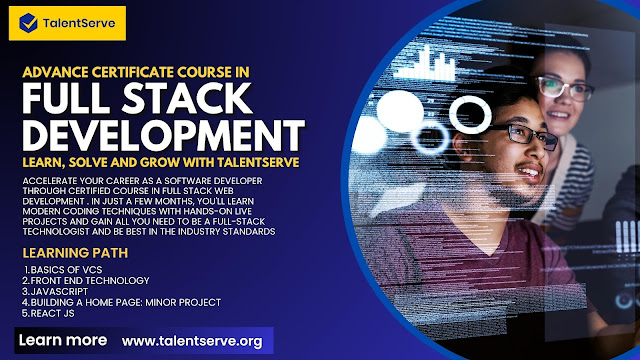Best Course In Data Science Learn, Solve, And Grow With TalentServe
Data Science is a multidisciplinary field that involves the use of statistical, mathematical, and computational techniques to extract insights and knowledge from data. It is the practice of applying scientific methods, processes, algorithms, and systems to extract knowledge and insights from structured and unstructured data. A Data Science course typically covers a range of topics related to working with data, including:
Statistics: Data Science relies heavily on statistics to analyze data and make informed decisions. Programming: Students will learn programming languages such as Python and R, which are widely used in Data Science. Machine Learning: Machine learning is a subset of artificial intelligence that teaches computers to learn from data and improve their performance over time. Data Visualization: Students will learn to use data visualization tools to represent data in a way that is easy to understand and interpret.
Big Data Technologies: In the modern era, data sets are getting bigger and bigger. So, it is necessary to learn how to work with Big Data technologies such as Hadoop and Spark.
Data Cleaning: Cleaning and preprocessing data is an essential part of data science. So, students will learn to clean, preprocess and transform data. Business Intelligence: Business intelligence tools are used to provide businesses with insights into their operations, and how they can improve their performance. Overall, Data Science is an interdisciplinary field, and a data science course should cover a range of topics related to working with data. For more details, you can check our site: https://www.talentserve.org/course-datascience
COURSE CONTENT
Introduction to Python
Basic Steps
NUMPY
Data Visualization
Pandas
Exceptions and Errors
Introduction to Artificial Intelligence and Machine Learning
Data Wrangling and Manipulation
Supervised Learning
Supervised Learning-Classification
Unsupervised learning
Machine Learning Pipeline Building
Decision Tree Analysis and Ensemble Learning
AI and Deep learning introduction
Artificial Neural Network
Deep Neural Network & Tools
Deep Neural Net optimization, tuning, interpretability
Convolutional Neural Net
Recurrent Neural Networks
Overfit and underfit
Transfer Learning
Working with Generative Adversarial Networks
Pytorch
%20(2).jpg)


.jpg)
Comments
Post a Comment